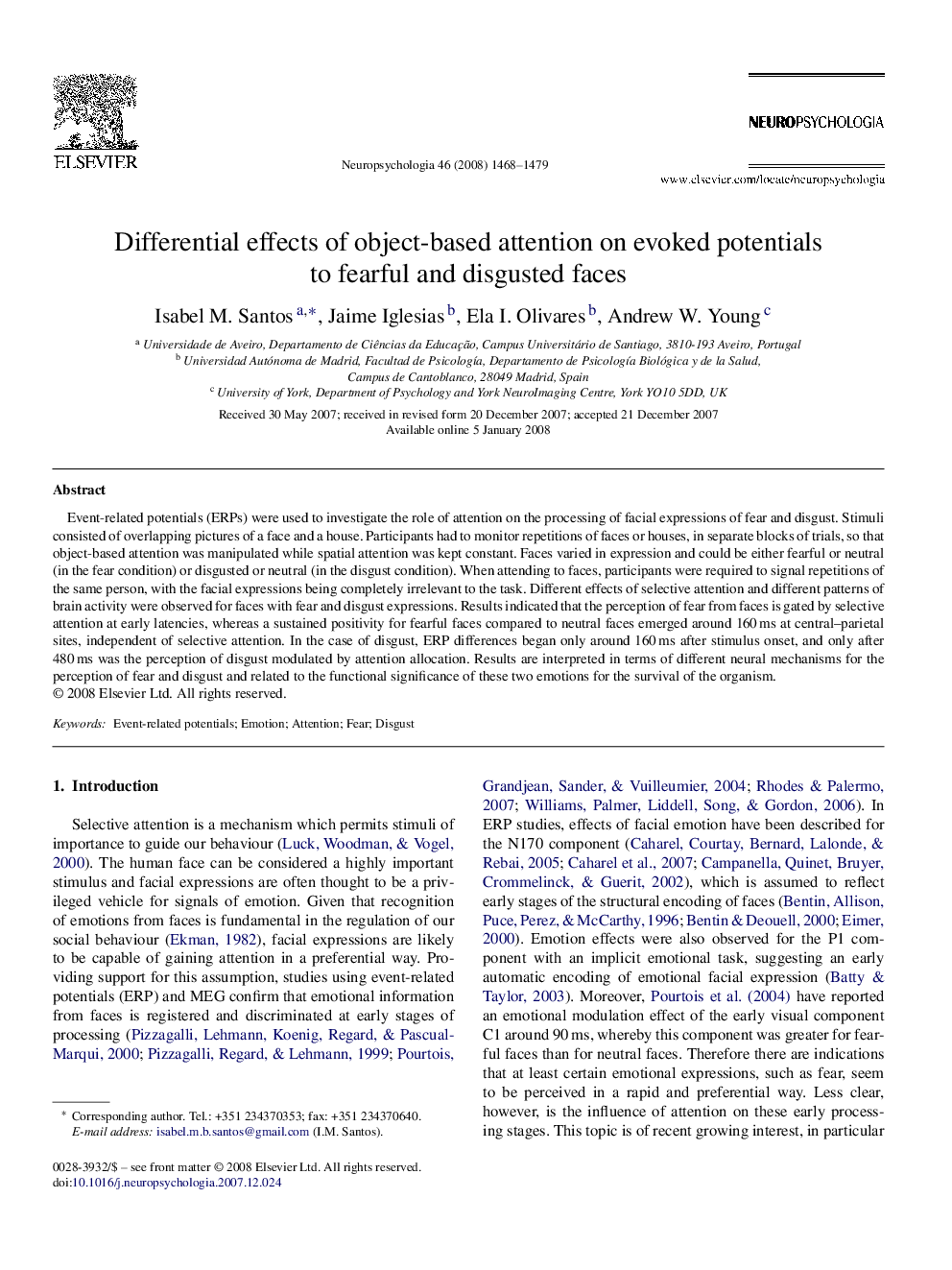| Article ID | Journal | Published Year | Pages | File Type |
|---|---|---|---|---|
| 10466841 | Neuropsychologia | 2008 | 12 Pages |
Abstract
Event-related potentials (ERPs) were used to investigate the role of attention on the processing of facial expressions of fear and disgust. Stimuli consisted of overlapping pictures of a face and a house. Participants had to monitor repetitions of faces or houses, in separate blocks of trials, so that object-based attention was manipulated while spatial attention was kept constant. Faces varied in expression and could be either fearful or neutral (in the fear condition) or disgusted or neutral (in the disgust condition). When attending to faces, participants were required to signal repetitions of the same person, with the facial expressions being completely irrelevant to the task. Different effects of selective attention and different patterns of brain activity were observed for faces with fear and disgust expressions. Results indicated that the perception of fear from faces is gated by selective attention at early latencies, whereas a sustained positivity for fearful faces compared to neutral faces emerged around 160Â ms at central-parietal sites, independent of selective attention. In the case of disgust, ERP differences began only around 160Â ms after stimulus onset, and only after 480Â ms was the perception of disgust modulated by attention allocation. Results are interpreted in terms of different neural mechanisms for the perception of fear and disgust and related to the functional significance of these two emotions for the survival of the organism.
Related Topics
Life Sciences
Neuroscience
Behavioral Neuroscience
Authors
Isabel M. Santos, Jaime Iglesias, Ela I. Olivares, Andrew W. Young,
